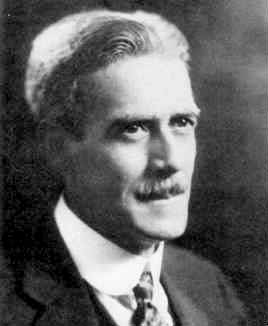


 تاريخ الرياضيات
تاريخ الرياضيات
 الرياضيات في الحضارات المختلفة
الرياضيات في الحضارات المختلفة 
 الرياضيات المتقطعة
الرياضيات المتقطعة
 الجبر
الجبر
 الهندسة
الهندسة 
 المعادلات التفاضلية و التكاملية
المعادلات التفاضلية و التكاملية 
 التحليل
التحليل
 علماء الرياضيات
علماء الرياضيات |
Read More
Date: 15-5-2017
Date: 3-5-2017
Date: 3-5-2017
|
Died: 3 February 1943 in Los Angeles, California, USA

Earle Hedrick attended High School in Ann Arbor from 1891 to 1892 preparing to enter the University of Michigan. He studied there from 1892 to 1896, graduating with a A.B. He then spent a year as a teacher of mathematics at the High School in Sheboygan, Wisconsin before beginning graduate studies at Harvard University in 1897. At Harvard his studies were directed by Bôcher and Osgood among others and he was awarded his Master's degree in 1898.
While at Harvard he wrote his first paper which was on three dimensional determinants. He received a fellowship to study abroad and he spent the sessions 1899-00 and 1900-01 at the University of Göttingen in Germany. There he profited greatly by attending lectures by Hilbert, Klein and other exceptional mathematicians. He was awarded a doctorate by Göttingen in February 1901 for a dissertation, supervised by Hilbert, Über den analytischen Charakter der Lösungen von Differentialgleichungen (On the analytic character of solutions of differential equations).
Harvard awarded Hedrick a scholarship for a third year to study at the École Normale Supérieure in Paris and there he spent part of 1901 in contact with Goursat, Émile Picard, Hadamard, Appell and Jules Tannery. This strengthen his interests in differential equations, the calculus of variations, and functions of a real variable which he would work on for the rest of his life. It also led to Hedrick translating Goursat's Cours d'Analyse into English which provided an important text for students.
After returning to the United States, Hedrick was appointed an instructor in mathematics at Yale University, a post he held from 1901 to 1903. In 1903 he was appointed professor of mathematics at the University of Missouri and remained there until 1920 when he was appointed professor of mathematics, and head of department, at the University of California at Los Angeles. In 1937 he became the provost of the University of California.
In addition to his research in pure mathematics, Hedrick was also interested in applications of mathematics and he wrote papers on a generalised form of Hooke's law and the transmission of heat in boilers. He became an active member of the Society for the Promotion of Electrical Engineering, the American Society of Mechanical Engineering and the American Institute of Electrical Engineers.
Hedrick's editorial work, however, was extraordinary. He was editor of the American Mathematical Monthly from 1913 to 1915, editor-in-chief of the Bulletin of the American Mathematical Society from 1921 to 1937, he was editor of 34 volumes in the Engineering Science Series and 35 volumes in the Series of Mathematical Texts. In addition to his editorial work for the American Mathematical Society he was vice-president in 1916 and president in 1929-30.
Archibald relates that his main hobby is carrying out:-
... long-continued experiments in crossing varieties of flowers to produce new types.
Hedrick is buried in Glendale City, Los Angeles county, California in the Forest Lawn Memorial Park which is a cemetery famous for its elaborate statues and reproductions of famous shrines and works of art.
Articles:



|
|
|
|
التوتر والسرطان.. علماء يحذرون من "صلة خطيرة"
|
|
|
|
|
|
|
مرآة السيارة: مدى دقة عكسها للصورة الصحيحة
|
|
|
|
|
|
|
نحو شراكة وطنية متكاملة.. الأمين العام للعتبة الحسينية يبحث مع وكيل وزارة الخارجية آفاق التعاون المؤسسي
|
|
|